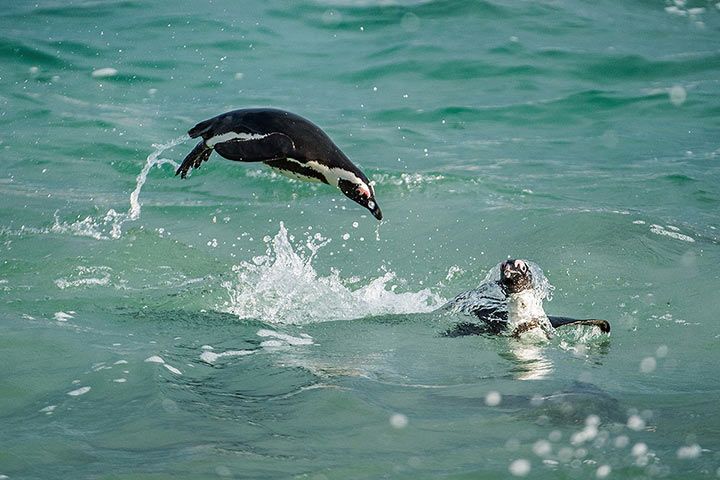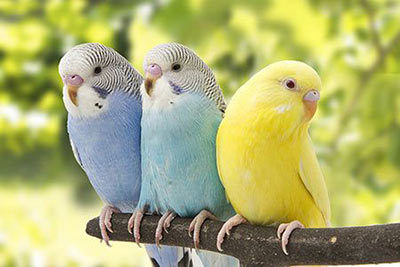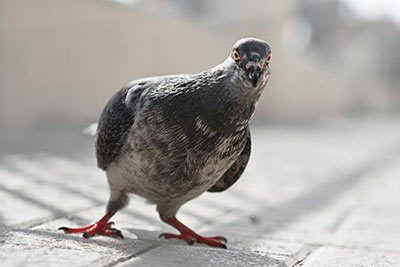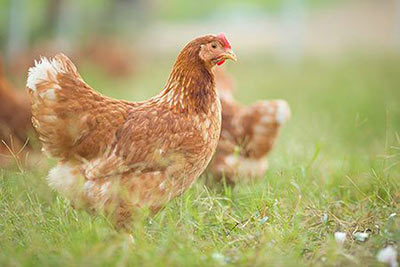African Penguin
African Penguin Facts
| Size | 24-27.5 in (60-70 cm) |
| Speed | Up to 12 mph (20 km/h) (in the water) |
| Weight | 5.5-6.6 lb (2.5-3 kg) |
| Lifespan | 10-15 years |
| Food | Fish, anchovies, sardines, mackerels |
| Predators | Fur seals, seagulls |
| Habitat | South Africa |
| Order | Penguins |
| Family | Penguins |
| Scientific name | Spheniscus demersus |
| Characteristics | The only penguin species in South Africa |
Main Characteristics
The African penguin is one of 18 penguin species. Unlike many other penguins species, it does not live in cold regions, but at the sunny and warm coasts of South Africa.

Anatomy and Appearance
Why Does the African Penguin Have Pink Patches of Skin?
Birds cannot sweat, because they do not have perspiratory glands. How then does the African penguin cool down when the South African sun is getting too hot? Of course it can jump into the cool ocean water, but what about the time it spends ashore?
The pink areas above its eyes help – the air that touches these featherless, nude patches of skin cools down the blood. An ingenious trick that is used by elephants in a similar manner.
Why Do African Penguins Have Black Spots?
The spotted plumage helps the penguins to recognize their buddies. The patterns of the spots are as unique as fingerprints.

Behavior
African Penguins Swim Long Distances for Food
The African penguin swims about 25 miles (40 km) every day to gather enough food. When it is very hungry, it sometimes even covers distances of 68 miles (110 km).
During the Molt, African Penguins Don't Eat
African penguins are molting once a year for a period of about 20 days. During this time they can't eat, because their new feathers are not yet waterproof and thus not suited to go hunting in the water. During this time they lose almost half of their body weight.

Enemies and Threats
The African penguin is considered a critically endangered species. The number of animals has declined sharply in recent decades. At the beginning of the 19th century there were around four million animals. According to an estimate in 2021, there are only just over 40,000 animals left (as of November 2023, no more recent data available).
Reproduction
African penguins build nests using their own feces. They place their nests under scrubs and rocks to be protected from the wind and the sun. The female penguin lays two eggs, which are then hatched by both parents. After 40 days, the fledglings come into the world. During the first 30 days, their parents lovingly look after them, keep them warm and feed them. After 60-130 days, the young penguins are fully grown.
Fun Facts
Who Needs Spectacles?
The African penguin has got pink patches of skin above its eyes, which look like spectacles. This is why the African penguin is called “Brillenpinguin” (penguin with spectacles) in German.


















